GrabCAD
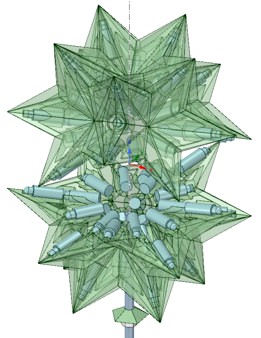
Ten Tetrahedra Tree Topper
by GrabCAD
Last crawled date: 1 year, 10 months ago
*Ten Tetrahedra Tree Topper (TTTT)*
It turns out that you can inscribe ten different tetrahedra in a dodecahedron. This project illustrates this polyhedral compound in a 250mm diameter, two-piece model. (Links in references below.)
It was modeled and prepared for printing in SpaceClaim, then printed in PolyJet Vero Clear on an Objet 260. The prepared version is included for those with a similar (255x252x200mm) build envelope. Also included are SpaceClaim and STEP files with the solids before merge for assembly. That should make it easy to adopt the design to a printer with a smaller envelope or so it can be made without pressure-washable supports.
As prepped, it requires a 3/8-16 tap for the upper blind hole and a 3/8 through hole at the bottom. It could be direct modeled or drilled to accept 9 or 10mm tap and through drills. The two halves are assembled with all thread, as well as a custom "pentanut" washer, a normal washer, and a nut.
It uses 50 individually addressable LEDs (WS2801) from Adafruit. Originally, I was going to drive them with the same Arduino that I was using for the tree, but the clever Lady Ada gives you a free Trinket mini Arduino-like CPU when you order a bunch of stuff. I recommend you get a few extra strands, because if you are like me, you will kill a few LEDs during assembly and you will want some leftover to play with. (Silicone lube ended up being the best way to not destory LEDs.) Final assembly was straightforward, as it was easy to be tidy with the LED cord by tucking it in between the LED receptacles. That said, it would be tricky to fit more than a Trinket in there.
How to drive the LEDs was up in the air when I was ready to print, so I left a hole off of the model. PolyJet Vero machines like soft Plexiglass, so you might consider a drill with a dubbed tip (ie, grind the cutting edge flat so there's no rake). A good location for the hole right is where the vertex of the pentanut meets a concave edge. I had no problem running USB, 2-18GA stranded wire for 5V power, and 5-18 solid wire for reset (needed for programming) and two pins plus 5V and ground for interactivity. (See photo of base of the TTTT.)
It turns out that the Trinket is really tiny. I quickly ran out of memory and ended up storing all the topology of the model in flash memory, which was fun to learn, but eventually I wished I had more memory. It deserves something beefier, and, in hindsight, I wish I had the board outside the TTTT given that the Trinken needs to be reset to be programmed. Source is up on
Github. The index data for the LED strand and all of the pre-computied topology was turned to data structures a Google Sheet.
The tree itself recieved 300 LEDs, which, all together, are bright as all get-out but smell a bit like injection-molded silicone. Those are controlled by a conventional Arduino (an old Lilypad, to be precise). It turns out that the green is very strong on these strands, so I ended up halving that channel for warmer whites. The tree and topper lights are all powered with some old 10A 5V supply of unknown origin.
References:
* GrabCAD (lastest info): https://grabcad.com/library/ten-tetrahedra-tree-topper-1/
* Video: https://youtu.be/B6gWAr850ew
* https://en.wikipedia.org/wiki/Compound_of_ten_tetrahedra
* Adafruit
* LEDs: https://www.adafruit.com/products/322
* Trinket 5V: https://www.adafruit.com/products/1501
* Github: https://github.com/bcourter/Ardunio-Projects/tree/master/tttt
* Google sheet: https://docs.google.com/spreadsheets/d/1bSkJw6RBlLszQwCV98VSWpaGMqbUV6SY9e-ySOjWa3M/edit#gid=0
It turns out that you can inscribe ten different tetrahedra in a dodecahedron. This project illustrates this polyhedral compound in a 250mm diameter, two-piece model. (Links in references below.)
It was modeled and prepared for printing in SpaceClaim, then printed in PolyJet Vero Clear on an Objet 260. The prepared version is included for those with a similar (255x252x200mm) build envelope. Also included are SpaceClaim and STEP files with the solids before merge for assembly. That should make it easy to adopt the design to a printer with a smaller envelope or so it can be made without pressure-washable supports.
As prepped, it requires a 3/8-16 tap for the upper blind hole and a 3/8 through hole at the bottom. It could be direct modeled or drilled to accept 9 or 10mm tap and through drills. The two halves are assembled with all thread, as well as a custom "pentanut" washer, a normal washer, and a nut.
It uses 50 individually addressable LEDs (WS2801) from Adafruit. Originally, I was going to drive them with the same Arduino that I was using for the tree, but the clever Lady Ada gives you a free Trinket mini Arduino-like CPU when you order a bunch of stuff. I recommend you get a few extra strands, because if you are like me, you will kill a few LEDs during assembly and you will want some leftover to play with. (Silicone lube ended up being the best way to not destory LEDs.) Final assembly was straightforward, as it was easy to be tidy with the LED cord by tucking it in between the LED receptacles. That said, it would be tricky to fit more than a Trinket in there.
How to drive the LEDs was up in the air when I was ready to print, so I left a hole off of the model. PolyJet Vero machines like soft Plexiglass, so you might consider a drill with a dubbed tip (ie, grind the cutting edge flat so there's no rake). A good location for the hole right is where the vertex of the pentanut meets a concave edge. I had no problem running USB, 2-18GA stranded wire for 5V power, and 5-18 solid wire for reset (needed for programming) and two pins plus 5V and ground for interactivity. (See photo of base of the TTTT.)
It turns out that the Trinket is really tiny. I quickly ran out of memory and ended up storing all the topology of the model in flash memory, which was fun to learn, but eventually I wished I had more memory. It deserves something beefier, and, in hindsight, I wish I had the board outside the TTTT given that the Trinken needs to be reset to be programmed. Source is up on
Github. The index data for the LED strand and all of the pre-computied topology was turned to data structures a Google Sheet.
The tree itself recieved 300 LEDs, which, all together, are bright as all get-out but smell a bit like injection-molded silicone. Those are controlled by a conventional Arduino (an old Lilypad, to be precise). It turns out that the green is very strong on these strands, so I ended up halving that channel for warmer whites. The tree and topper lights are all powered with some old 10A 5V supply of unknown origin.
References:
* GrabCAD (lastest info): https://grabcad.com/library/ten-tetrahedra-tree-topper-1/
* Video: https://youtu.be/B6gWAr850ew
* https://en.wikipedia.org/wiki/Compound_of_ten_tetrahedra
* Adafruit
* LEDs: https://www.adafruit.com/products/322
* Trinket 5V: https://www.adafruit.com/products/1501
* Github: https://github.com/bcourter/Ardunio-Projects/tree/master/tttt
* Google sheet: https://docs.google.com/spreadsheets/d/1bSkJw6RBlLszQwCV98VSWpaGMqbUV6SY9e-ySOjWa3M/edit#gid=0
Similar models
thingiverse
free

LED Torture Tree Topper by techfreek
... is technically a remix of https://www.thingiverse.com/thing:3310601 but the tool to mark it a remix isn't finding that model
thingiverse
free

InfiniPix by OpenSourceClassroom
...o the trinket, either power the trinket with a 5v power supply or through micro usb cable. screw the frame together and enjoy!!!
thingiverse
free
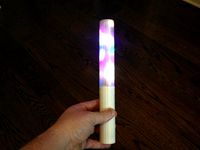
Magic Wand by downeym
...be purchased here: http://www.adafruit.com/products/1501
led strip can be purchased here: http://www.adafruit.com/products/1138
thingiverse
free

Mini Lighthouse re-mix lighted with neopixels by bonnette
...ource code for the sign. the arduino code has been modified to display a more pleasant light show. i also added a wiring diagram.
thingiverse
free

Tarot 680 Pro LED ESC covers by jgbennet1
...and a 5v adafruit trinket (https://www.adafruit.com/products/1501?gclid=cnzihrrn5sscfyqpfgodllibkw).
the code i used is attached.
thingiverse
free
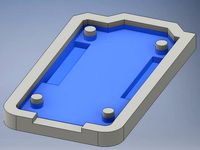
Trinket Bumper by ScottCher
... this should work for either the 3.3v or 5v version:https://www.adafruit.com/products/1501https://www.adafruit.com/products/1500
thingiverse
free

Light Tree by Fredbartels
...ble leds like this https://www.adafruit.com/products/322 can be easily placed. i print the trees hollow (no fill) with no bottom.
thingiverse
free

Christmas Tree Topper by delacruzfm
...giverse
christmas tree topper
print in 2 halves and place together. i put led's in mine with an arduino and it looked great
thingiverse
free

Wearable Snowman with LEDs by daddyboomalati
...ittle off. i ended up cutting one to get three to align. i'll measure them and see what the problem is and upload a new .stl.
thingiverse
free

Christmas tree topper remix with light holes by takenby
...per light holes.
i printed it in transparent abs with raft but without any supports, and its much better from real than in photo.
Tetrahedra
thingiverse
free

OpenSCADvent day 9 - Meissner Tetrahedra (and vec3 math tools) by spacebuck
... with is the dihedral angle of a tetrahedron. type in one vertex of the desired meissner tetrahedron, and openscad does the rest!
thingiverse
free

Cat Christmas Ornaments by pmoews
...discussion of the synmmetry aspects of the ornaments. the tetrahedra cat ornament lacks reflective symmetry. added on november 15...
thingiverse
free

Contoured Blocks for Magnetic Tetrahedral-octahedral Honeycomb by DaveMakesStuff
...in place, the odd loose fitting one will require a dab of glue. polarity should be opposite between octahedrons and tetrahedrons.
thingiverse
free

Rhombic Triacontahedron by mathgrrl
...be formed from subsets of its vertices, including ten tetrahedra five cubes, an icosahedron and a dodecahedron (see wikipedia)...
thingiverse
free

OpenSCADvent day 14 - Meissner Dice by spacebuck
...meissner dice by spacebuck thingiverse i turned the meissner tetrahedra from day 9 into dice. are they fair dice?...
thingiverse
free

Pyrochlor lattice by Koli
...these crystal systems ions reside on the corners of tetrahedra and experience magnetic exchange with each other (see https://en.wikipedia.org/wiki/spin_ice)...
thingiverse
free

Spheroform Tetrahedron d4 by JonathanVB
...spheroform tetrahedron d4 by jonathanvb thingiverse symmetric spheroform tetrahedra are interesting shapes, have 4 sides, and roll nicely....
thingiverse
free

Tetrahedral Dissection of the Cube, Cube Puzzle
...e + 4 corners
methods ii:
print the cube at a resolution < 0.2mm , all in one, and then carefully loosen the pieces.
have fun!
thingiverse
free

Cuboctahedron Puzzle, Cube Puzzle
...from a cube by slicing off the 8 corners (tetrahedra using its edge midpoints for the slicing plane. well,...
thingiverse
free

Tetrahedron Building Blocks
...is probably too difficult to solve by hand. curiously, tetrahedra of orders 6 and 7 cannot be made from...
Topper
3ddd
$1
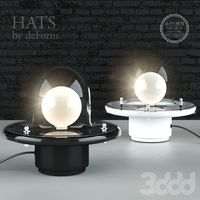
Hats by deFORM table
...a subtle sense of familiarity. its transparent colored glass topper lights the ceiling while the clear bottom is starkly...
cg_studio
$25

Star of David Tree Topper3d model
...per3d model
cgstudio
.max - star of david tree topper 3d model, royalty free license available, instant download after purchase.
cg_studio
$25

Christmas Decoration Kit3d model
...winter new year tree santa snow ornament gift toy topper .wrl .stl .sldprt .obj .lwo .igs .dwg .c4d .max...
3d_export
$25

Star of David Tree Topper 3D Model
... david tree topper 3d model
3dexport
star david tree topper christmas
star of david tree topper 3d model italinofx 98090 3dexport
3d_export
$42

Birthday Cake 3D Model
...cake wedding bride groom happy birthday party dessert bridal topper decoration baking candle candles birthday cake 3d model tartino...
3d_export
$15

Hand Cranked Sharpener 3D Model
...sharpener 3d model 3dexport hand cranked pencil sharpener parer topper stationery manual prism hand-cranked spring office supplies sharp supply...
3d_export
$6

Pencil Sharpener 3D Model
...pencil sharpener manual prism classic writing instrument tool parer topper knife stationery pocket block blade common crayon supplies school...
3d_export
$7

christmas tree
...3dexport new year tree with garland, balls and star topper visualization models. models are separated. each model has a...
3d_export
$20
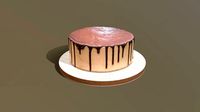
Plain Chocolate Drip Cake
...uk. you can purchase real cake from this link: https://cakesburg.co.uk/products/naked-drip-cake-with-personalised-glitter-cardstock-topper_pos=17&_sid=830fc62ab&_ss=r textures 4096*4096px pbr photoscan-based materials base color, normal map,...
3d_export
$20

Plain Pink Drip Cake
...uk. you can purchase real cake from this link: https://cakesburg.co.uk/products/naked-drip-cake-with-personalised-glitter-cardstock-topper_pos=17&_sid=830fc62ab&_ss=r textures 4096*4096px pbr photoscan-based materials base color, normal map,...
Ten
3ddd
$1

Meurice sconce by Jonathan Adler
...7.75" wide x 12" high x 5.5" deep • ten 25 watt max g16.5 candelabra bulbs • can be...
3d_ocean
$49

Big City Low Poly Pack
...made in 3d max 2011. files included: more than ten unique buildingss 6 vehicles trees 2 files max format,...
3d_ocean
$5

Wallpaper Vintage Textures
...repeating retro seamless surfaces tileable vintage wall wallpaper website ten seampless pattern realistic texture wallpaper with line patterns. wallpaper...
3d_ocean
$85

Ford Mustang 2005
...motor company. the ford mustang is one of the ten cars have changed the...
3d_ocean
$5

Bowling Pins And Ball. (VrayC4D)
...(vrayc4d) 3docean bowling family friends funny game games pin ten toys files: .3ds .c4d .obj .02_render.png (10.000x10.000 .final render...
3d_ocean
$6

Cloth Shader With 10 Different Patterns
...my cloth shader with different patterns this file contain ten different patterns of cloth with a sample image and...
3d_ocean
$85

Ford Mustang Pony
...motor company. the ford mustang is one of the ten cars have changed...
3d_ocean
$85

Ford Mustang Convertible GT
...motor company. the ford mustang is one of the ten cars have...
3d_ocean
$85

Ford Mustang Convertible
...motor company. the ford mustang is one of the ten cars have...
3d_ocean
$8

Camouflage Fabric Textures
...seamless sniper soldier strong surface surfaces textile texture tileable ten file, ten different seampless pattern texture camouflage fabric. camouflage...
Tree
3d_export
$300

City Plan 007 3D Model 3D Model
...city plan 007 3d model 3d model 3dexport traffic tree flat tile metro urban structure apartment road plaza office...
3d_export
$300

City Plan 005 3D Model 3D Model
...city plan 005 3d model 3d model 3dexport traffic tree flat tile metro urban structure apartment road plaza office...
3d_export
$150

Skyscraper business center 037 3D Model
...skyscraper business center 037 3d model 3dexport traffic tree flat tile metro urban structure apartment road plaza office...
3d_export
$150

Skyscraper business center 045 3D Model
...skyscraper business center 045 3d model 3dexport traffic tree flat tile metro urban structure apartment road plaza office...
3d_export
$5

Huge Treee 3D Model
...huge treee 3d model
3dexport
huge tree
huge treee 3d model nikkistinger19 38424 3dexport
3d_export
$10

Lowpoly Trees 3D Model
...olors; tree design leaf summer trunk origami nature brown element forest paper set
lowpoly trees 3d model cervelat 93211 3dexport
3d_export
$30

White Lipped Tree Frog 3D Model
...ree frog 3d model
3dexport
treefrog frog greenfrog largefrog amphibian
white lipped tree frog 3d model switchpilot 32671 3dexport
3d_export
$10

2 Thuya trees 3D Model
...2 thuya trees 3d model
3dexport
thuya tree evergreen plant
2 thuya trees 3d model buncic 32968 3dexport
3d_export
$25
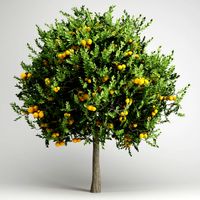
CGAxis Orange Tree 20 3D Model
...xis detailed exterior summer 3ds max c4d cinema vray mental ray scanline fbx
cgaxis orange tree 20 3d model cgaxis 39074 3dexport
3d_export
$19

HDR 042 Acre sIBL 3D Model
...3d model 3dexport hdr sibl blue sky clear field tree horizon afternoon sunset acre environment reflection map resolution hdr...
